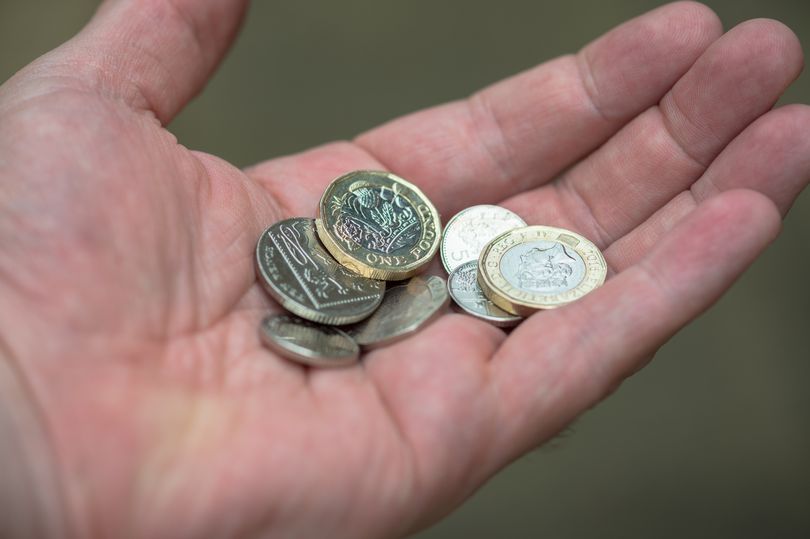
'I'M A COIN EXPERT AND HERE'S TELL-TALE SIGNS YOU HAVE A VALUABLE COIN'
Nowadays many of us don't carry change with contactless being the typical way of paying for many.
However while you may not use any, you'll likely have some lying around your home, and it could be worth a pretty penny. To help people out, one expert is urging people to take a look at their spare change, revealing the tell-tale signs of a valuable coin.
Mat Biernacki, Coins and Currency Specialist at Vintage Cash Cow said there are five things you will want to look out for. From its mintage to errors, here is what you need to know.
1. It has a low mintage number (it’s rare)
You’ve probably heard about mintage in relation to coins. But what does this actually mean? The expert explains: "A coin’s mintage is the number of coins that have been produced.
"For example, if the mintage number is 100,000, only 100,000 of the specific coin have been produced. This means that the lower the mintage, the rarer the coin. And – you guessed it – the rarer a coin, the more likely it is to be valuable."
Low mintage can be deliberate with limited edition coins being made such as for a huge event. The experts adds: "However, it can also occur due to ageing as coins can originally be issued in the thousands or millions, but are gradually lost, worn down and therefore become rare."
If you have a British coin you think might be valuable, you can find the mintage number on Royal Mint’s coin archive.
2. It’s in high demand
Just like most things, the value of a coin is impacted by supply and demand. The more people who want one, the higher its value. On the flip side, when demand is low, the value can plummet.
While mintage sets the initial supply of a coin, according to Biernacki, demand is driven by factors such as collector interest, historical importance, trends and overall popularity. All of these factors often work together to influence the value of a coin, however sometimes a coin with a low mintage might have inherent rarity, but if there is no demand, the price may not be as high, vice versa.
According to the expert: "A recent example of this is the death of Queen Elizabeth II. Demand for coins and notes featuring her portrait have soared and therefore their value has increased significantly – even in those with a relatively high mintage."
3. It’s in great condition
The expert says it is important to ensure your coin is in good condition as it is "intrinsic" to the coin's value. This means even if you have a coin with a low mintage that’s in high demand, it could be worth little to nothing if it’s in extremely poor condition.
He added: "Generally speaking, the better the condition of the coin, the more it will be worth to a collector. In fact, a coin in perfect condition could be worth hundreds of times more than a poor-quality version of the same coin.
"This is because antique coins in ‘mint’ (and in some cases, even presentable) condition are extremely rare. In fact, even a lower demand coin can be worth significantly more than its average value if it’s in flawless condition.
"It’s possible to ‘grade’ your coin yourself, but it takes years of experience to do it correctly. Instead, you could send your coin collection to a coin specialist, such as Vintage Cash Cow, who’ll value them for free."
4. It has historical significance
The specialist says coins which commemorate a significant historical event or period of time are often highly valuable as they’re typically (though not always) produced in limited quantities, making them rare.
Their market value is also increased as people will may have an emotional connection to the event such as nostalgia. Hundreds of commemorative coins have been struck in the UK, namely honouring coronations, jubilees, royal deaths, military history, technological advancements, cultural milestones, prominent British figures and even noteworthy social movements – and more.
5. It was struck with an error
Finally the last tip the expert recommends you look out for are errors. Biernacki explains: "Very few coins with ‘minting’ errors actually make it into circulation, as they’re spotted at the mint’s quality control before they make it into circulation. This means the error coins that do make it out are often incredibly rare – so if you have one in your collection, it could be worth a small fortune.
"For example, a coin with a rotated die – when the reverse of one side of the coin isn’t perfectly aligned with the other – could be extremely valuable. The design on the coin should be the same way up as the Queen's head when the coin is turned over. The more rotated the other side, the more valuable the coin could be.
"Another valuable error is when a coin is struck off centre and is therefore missing part of the design. These coins can be highly valuable, but it does depend on how far off centre they‘re struck and the specific impact this has had on the design. For example, a missing date or digit due to being struck off centre could actually end up lowering the value."
Don't miss the latest news from around Scotland and beyond. Sign up to our daily newsletter .
2024-02-06T20:51:27Z dg43tfdfdgfd